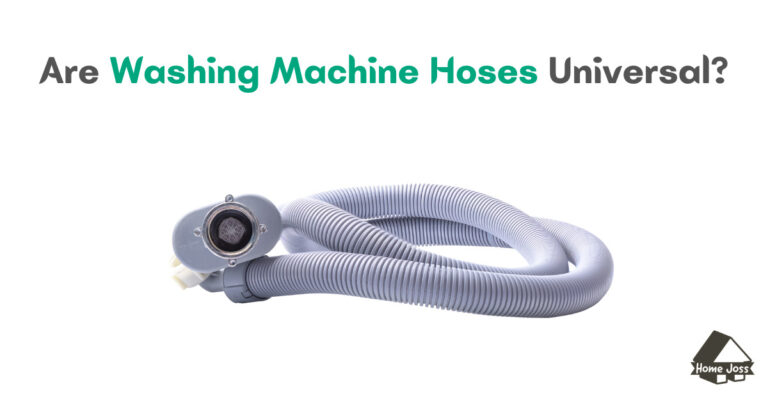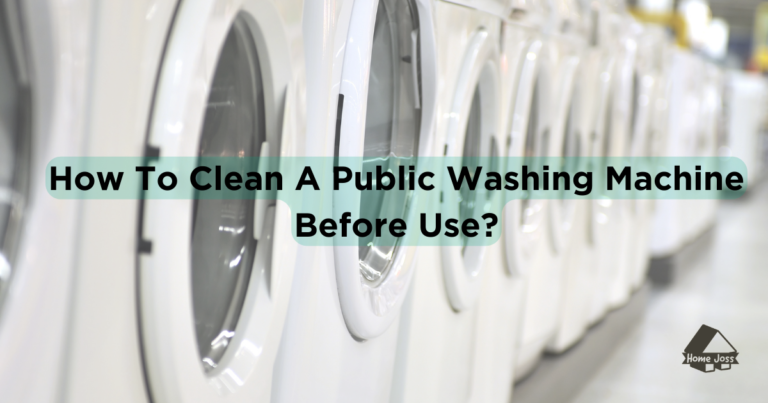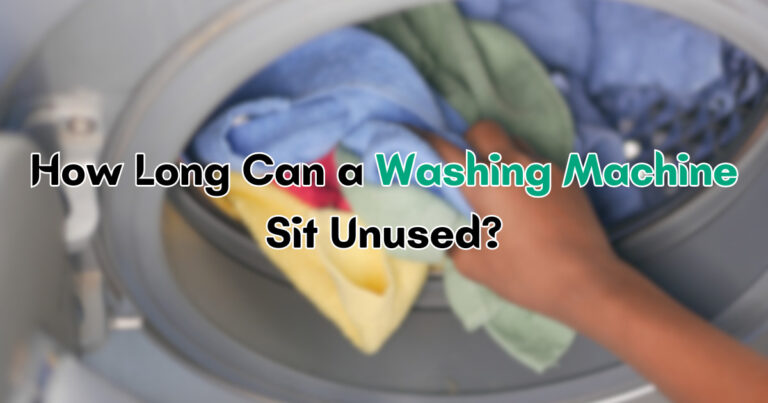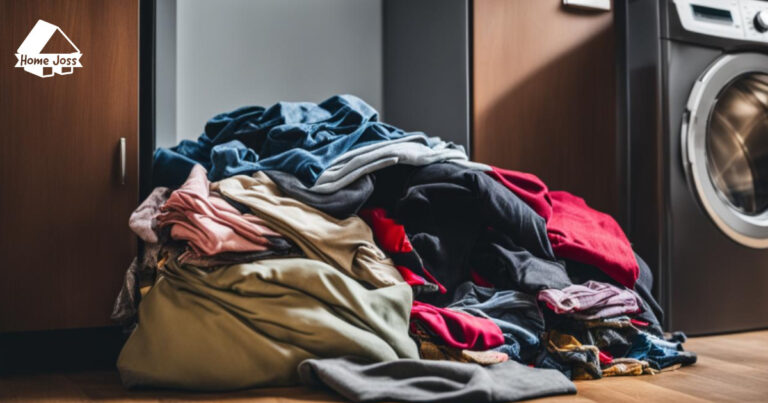The UL error code on a washing machine typically indicates an unbalanced load. This can occur if the laundry is not distributed correctly, if there are weakened or broken suspension pendants if the motor stator is damaged if the bearing is scattered or poorly lubricated, or if the washing machine is not installed correctly.
To address the issue, you can try letting the machine complete the mini-cycle to redistribute the load, manually untangling the laundry, rebooting the equipment, resetting the error code, checking for foreign objects, and checking for cracks or dirt in the plastic damper.

If these steps do not resolve the issue, it may be necessary to seek professional help to check for issues such as a damaged bearing, broken motor stator, or faulty suspension pendants.
Possible Causes of the UL Error Code
There are several possible causes for the UL error code on a washing machine. This error typically indicates an unbalanced load, which can result from various factors.
Here are some potential reasons why the UL code may appear:
- Manual untangling: If the laundry is tangled or twisted together, it can create an imbalanced load. Manually untangling the clothing before starting the wash cycle can help prevent this issue.
- Equipment reboot: Sometimes, a simple reboot of the washing machine can help resolve the UL error code. Turn off the machine, unplug it from the power source, wait a few minutes, and then restart it.
- Error code reset: Many washing machines have a reset option for error codes. Consult your machine’s manual on how to reset the UL error code specifically.
- Foreign objects: Check for any foreign objects, such as coins or small items, that may have become trapped in the drum. These objects can disrupt the balance of the load, triggering the UL error.
- Plastic damper: Inspect the plastic damper, which helps stabilize the drum during a wash cycle. Look for cracks, signs of wear, or excessive dirt that could affect its function.
- Damaged bearing: A damaged or scattered bearing can cause the drum to become imbalanced. If you notice unusual noises, vibrations, or leaks coming from the washing machine, a faulty bearing could be the culprit.
- Broken motor stator: The motor stator is responsible for spinning the drum. If it becomes damaged, the drum may not rotate evenly, leading to an unbalanced load.
- Faulty suspension pendants: Weakened or broken suspension pendants, which support the drum, can contribute to an imbalanced load. Inspect these components for any signs of damage or wear.
If attempting these troubleshooting steps does not resolve the UL error code, it is recommended to seek professional assistance.
A technician can diagnose and repair any underlying mechanical issues that may be causing the imbalance and the error code.
| Possible Causes | Solution |
|---|---|
| Manual untangling | Untangle laundry prior to starting the wash cycle |
| Equipment reboot | Turn off and unplug the washing machine, wait a few minutes, then restart |
| Error code reset | Consult the machine’s manual on how to reset the error code |
| Foreign objects | Check for and remove any foreign objects trapped in the drum |
| Plastic damper | Inspect for cracks, signs of wear, or excessive dirt |
| Broken motor stator | Contact a professional technician for repair |
| Faulty suspension pendants | Seek professional assistance to inspect and replace suspension pendants if necessary |
Troubleshooting the UL Error Code
To address the UL error code, there are several troubleshooting steps you can take to resolve the issue and get your washing machine back to normal functioning. By following these steps, you may be able to identify and fix the underlying problem causing the unbalanced load.
- Complete a mini-cycle: Allowing the washing machine to complete a mini-cycle can help redistribute the load and resolve the unbalanced issue. This can be done by simply restarting the cycle or selecting a spin-only program. Give it some time to adjust the load and see if the UL error code disappears.
- Check for foreign objects: Inspect the drum and the surrounding areas for any foreign objects that may have accidentally entered the machine. These objects can disrupt the balance during the spin cycle and trigger the UL error code. Remove any items you find and run a new cycle to see if the problem persists.
- Inspect the plastic damper: Examine the plastic damper, which is responsible for absorbing shocks and vibrations during the wash cycle. Look for any cracks, dirt, or signs of wear and tear. If you notice any damage, the damper may need to be replaced to restore proper balance and eliminate the UL error code.
- Seek professional help: If the aforementioned troubleshooting steps do not resolve the issue, it is advisable to seek professional assistance. A trained technician will be able to diagnose and repair any significant problems that may be causing the unbalanced load, such as a damaged bearing, broken motor stator, or faulty suspension pendants.
Remember, it’s important to address the UL error code promptly to prevent further damage to your washing machine and ensure optimal performance. Regular maintenance, such as evenly distributing the laundry and checking for any foreign objects or damage, can help prevent the recurrence of this error code in the future.
| Troubleshooting Steps | Effectiveness |
|---|---|
| Complete a mini-cycle | ✓ |
| Check for foreign objects | ✓ |
| Inspect the plastic damper | ✓ |
| Seek professional help | ✓ |
FAQ about UL Meaning on Washing Machine
What does the UL error code on a washing machine mean?
The UL error code usually indicates an unbalanced load.
What can cause an unbalanced load on a washing machine?
An unbalanced load can occur due to incorrect laundry distribution, weakened suspension pendants, damaged motor stator, scattered bearings, or improper installation.
How can I address the UL error code on my washing machine?
You can try letting the machine complete the mini-cycle to redistribute the load, manually untangling the laundry, rebooting the equipment, resetting the error code, checking for foreign objects, and checking for cracks or dirt in the plastic damper. If these steps do not resolve the issue, it may be necessary to seek professional help.
Understanding the UL error code on your washing machine and taking appropriate action can help ensure smooth operation and optimal performance. The UL error code typically indicates an unbalanced load, which can be caused by various factors.
Incorrect distribution of laundry, weakened suspension pendants, damaged motor stators, scattered bearings, and improper installation are some of the common culprits.
To address the UL error code, there are several troubleshooting steps you can take. First, allow the machine to complete a mini-cycle, as this can help redistribute the load and resolve the unbalanced issue. If necessary, manually untangle the laundry to ensure even distribution.
Additionally, you can try rebooting the equipment and resetting the error code. Don’t forget to inspect the washing machine for any foreign objects or damage to the plastic damper, as these can also contribute to the UL error code.
While these troubleshooting steps can often resolve the issue, there are cases where professional assistance may be needed. If the problem persists after attempting the aforementioned steps, it is advisable to seek help from a qualified technician.
They can inspect and diagnose more severe issues, such as a damaged bearing, broken motor stator, or faulty suspension pendants, which may require specialized repair or replacement.
In order to avoid recurring UL error codes and maintain the optimal performance of your washing machine, it is crucial to practice proper laundry distribution. Ensure that the laundry is evenly spread out and avoid overloading the machine.
Regular maintenance, such as cleaning and inspecting the machine for any signs of wear or damage, can also help prevent issues.
Remember, when it comes to the UL error code, a proactive approach and timely professional assistance can go a long way in keeping your washing machine operating smoothly.






